Things we like
- Spacious cabin
- Value for money
- Ride and handling
Not so much
- Lacklustre engine performance
- Fussy interior design
- Ceiling-mounted centre seatbelt
There’s something about cars that don’t shout about their virtues. Cars that don’t brag, but rather quietly get on with the job of transporting their owners with minimal fuss but maximum competency.
Subaru’s Forester is one such car. Japanese compatriots like the Mazda CX-5 and Nissan X-Trail continue to creep further toward premium positioning, while Korean and European rivals flaunt ever-edgier designs. Against this backdrop, the Forester is a comparative introvert.
Its powertrain has no sparkle to its numbers and its demure cabin won’t ever be confused for something high-end, but make no mistake: Subaru’s mainstay SUV gets the fundamentals so very right.
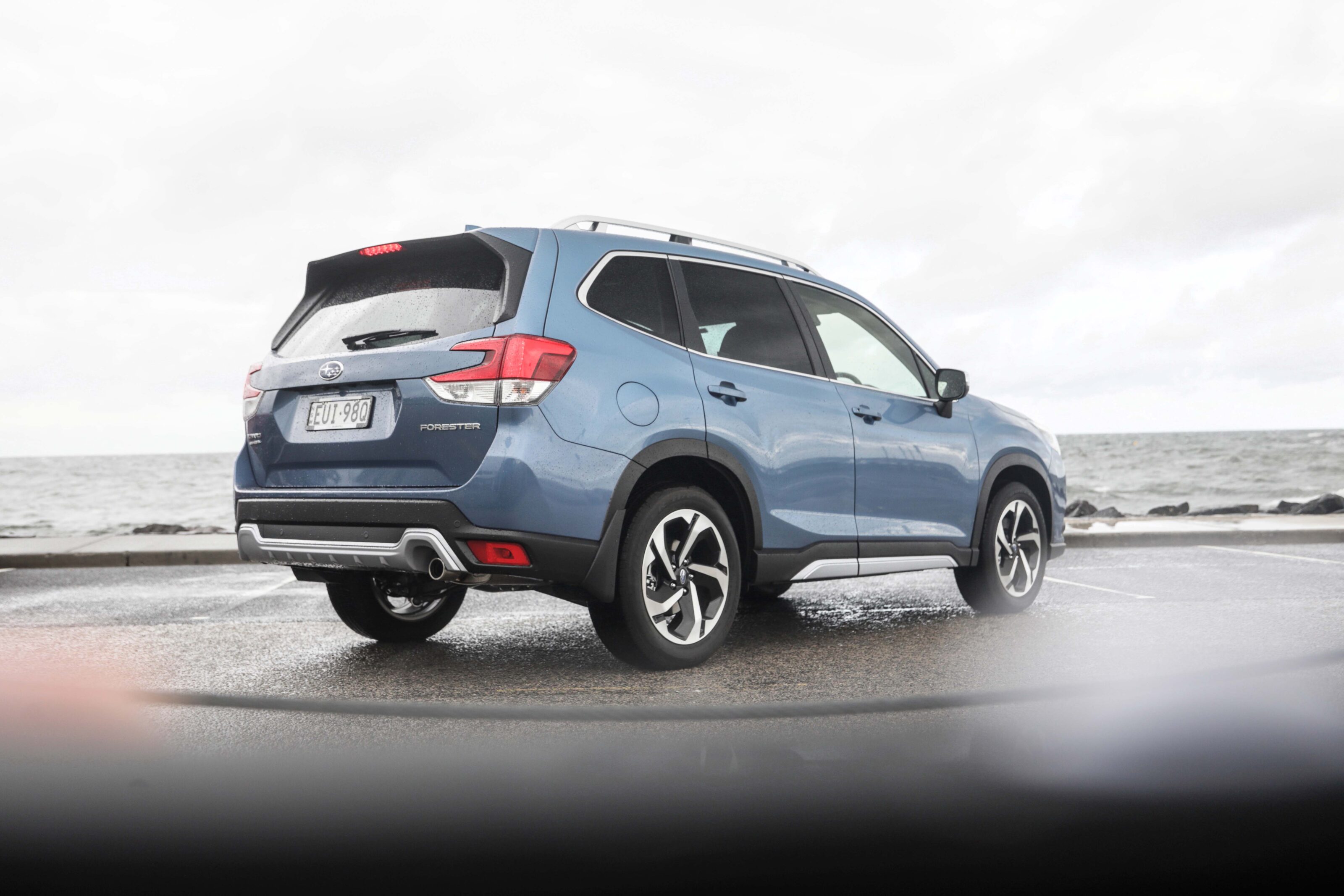
JUMP AHEAD
- How much is it, and what do you get?
- How do rivals compare on value?
- Interior comfort, space and storage
- What is it like to drive?
- How is it on fuel?
- How safe is it?
- Warranty and running costs
- VERDICT
- Specifications
How much is it, and what do you get?
The Forester 2.5i-S sits at the top of the Forester’s specification hierarchy alongside the Hybrid S and is priced at $46,340 before on-road costs, or $51,429 drive-away.
As a high-grade model, the feature list is generous. Leather upholstery, a power sunroof, an eight-speaker Harman Kardon sound system, built-in sat-nav, keyless entry and ignition and a power-operated tailgate are all standard at the 2.5i-S level, alongside other quality-of-life improvers like dusk-sensing headlights, rain-sensing wipers, self-dimming rear-view mirrors, heated and power-adjustable front seats, adaptive cruise control and dual-zone climate control.
The primary infotainment display is an eight-inch touchscreen (though other driver information is displayed on the separate 4.2-inch trip computer readout at the top of the dash, as well as within the instrument panel), and besides the baked-in sat-nav also offers AM/FM/DAB+ radio and smartphone mirroring via Android Auto or Apple CarPlay.
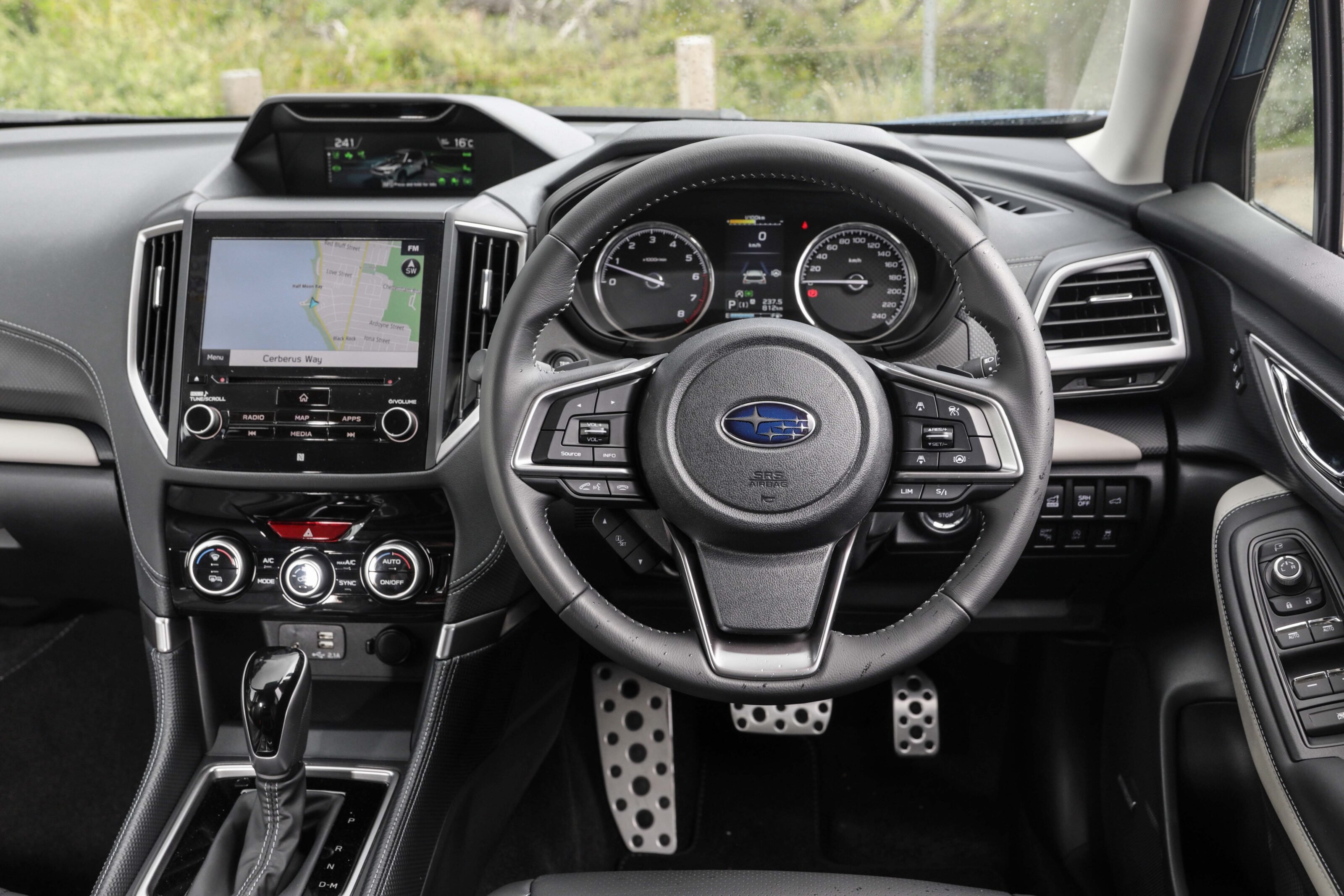
How do rivals compare on value?
When comparing like-for-like offerings, the Forester 2.5i-S has an edge on value for money.
Typical top-spec rivals from Japan and Korea tend to retail above the $50K mark yet the range-topping petrol Forester stays well below that while also providing owners with a feature to which almost all of its competitors attach a significant premium: All-wheel drive.
Competitors that align most closely on size, equipment, mechanical stats and price include the Volkswagen Tiguan 132TSI Life ($46,490), Nissan X-Trail ST-L 7-seat ($46,290), Toyota RAV4 GXL Hybrid AWD ($45,600), Mitsubishi Outlander Aspire AWD ($45,740) and Honda CR-V VTi-L AWD ($46,200). All prices are before on-road costs except for the Honda’s no-haggle drive-away figure.
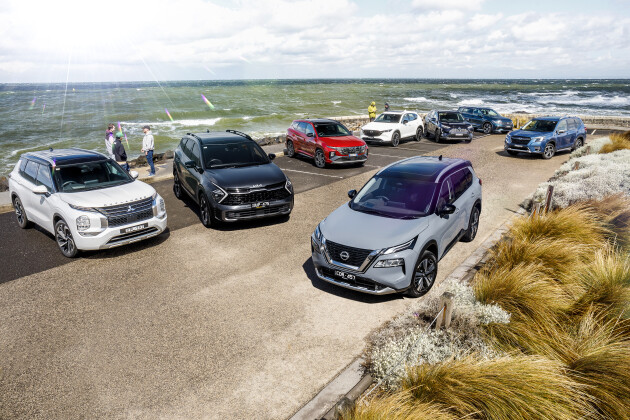
Medium SUV comparison: 2023 Mega Test
Thinking of buying a new mid-size SUV this year? We test eight of the best and most popular contenders to see where you should spend your money
Interior comfort, space and storage
After five years, age may be starting to introduce some figurative crow’s feet to the Forester’s somewhat busy and slightly chaotic interior design. While a facelift applied in 2021 brought a revamp to the exterior, the Forester’s cabin went largely unchanged. As such, the cabin feels a little bit old-school in 2023. Ageist? Maybe, but the presence of a CD slot is definitely quaint.
Yet this is one of the better-executed SUV interiors around. A low shoulder line, tall roof and huge windows flood the cabin with light and allow little ones in the back to get a great view outside, while driver vision is aided by the slim A-pillars, stalk-mounted wing mirrors and big quarterlight windows on the front doors.
There’s plenty of adjustability to the front seat and steering column and the seats themselves boast great cushioning that promotes long-distance comfort.
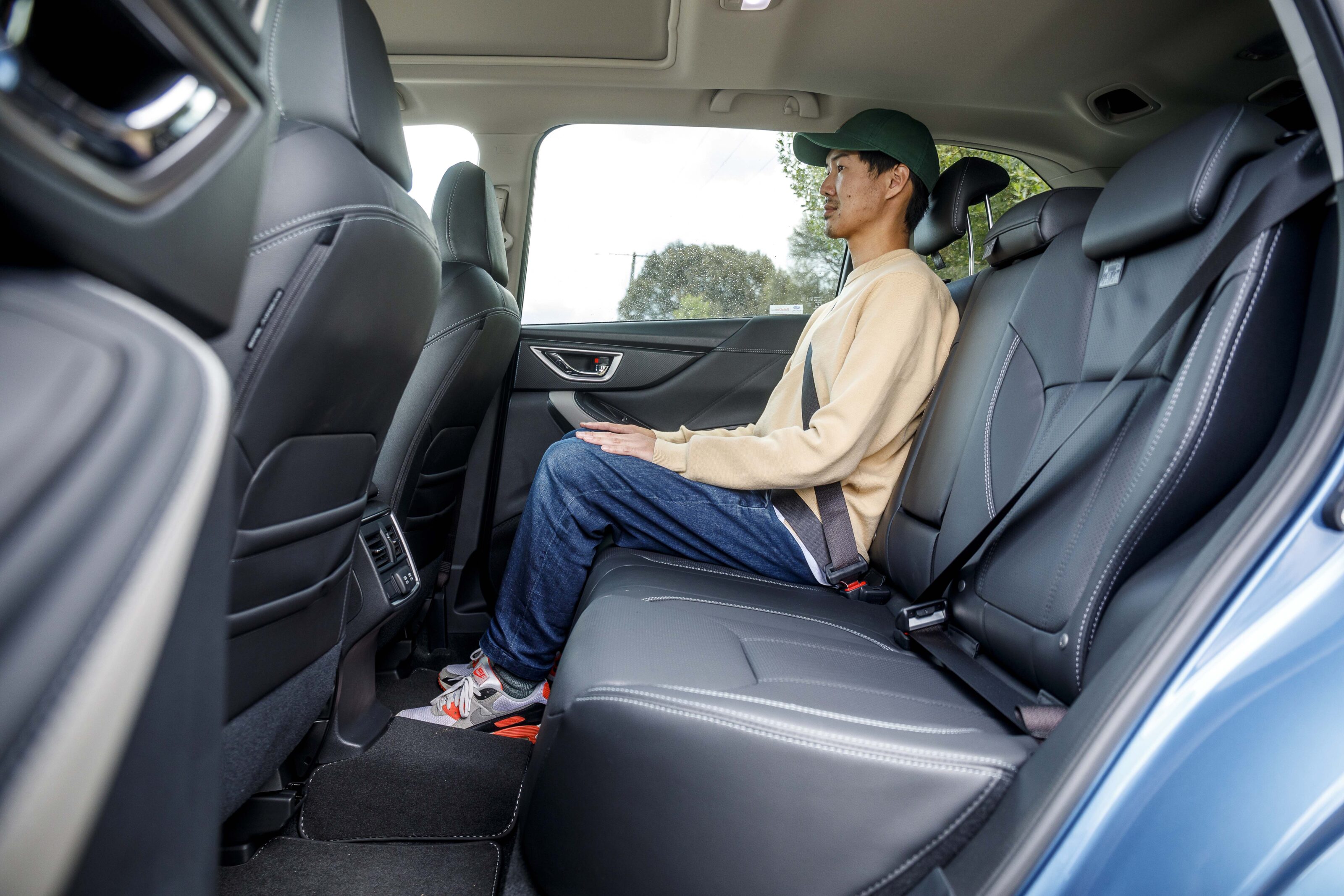
There are also small touches that really cement this as a well-thought-out interior, such as the sun visor extensions that help plug the gap between visor and mirror when the sun is dipping low over the horizon, or the parking ticket holder above the driver’s right knee. Getting the fundamentals correct is important, but the little things matter too.
Backseaters enjoy plenty of knee room and legroom as well as a reclinable backrest and wide centre armrest (though the centre belt still spools out of the roof, annoyingly), and a pair of ISOFIX child seat anchorages equip the outer rear seats. Air vents on the back of the centre console keep them cool, while this flagship variant’s massive panoramic glass roof provides plenty of light to the rear cabin.
The Forester’s 509-litre boot space may not be the biggest in the segment, but it’s far from the smallest and it packs useful features like four shopping bag hooks and remote releases to fold down the rear seatbacks from the tailgate area – conveniences that are far from universal in this segment.
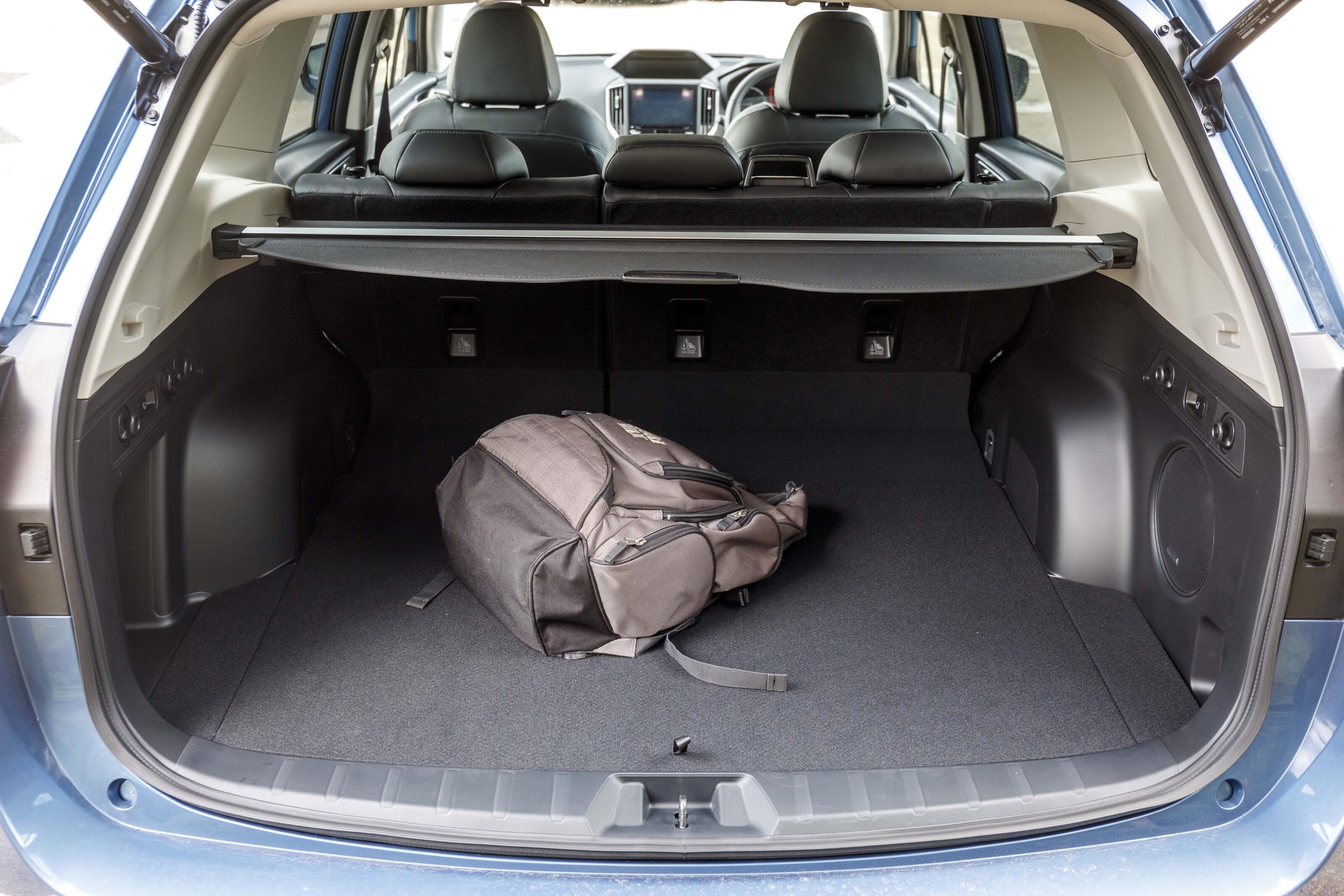
What is it like to drive?
With a 2.5-litre naturally-aspirated flat-four engine producing 136kW and 239Nm, the Forester only offers modest mechanical performance. Its automatic continuously variable transmission (CVT) does at least mesh well with the engine, working to keep it spinning in the thickest part of its torque band and minimising the need for big revs during typical driving, while a relatively svelte 1576kg kerb weight helps.
Its suspension is more impressive. With long travel and an excellent calibration of spring rate and dampers, the Forester soaks up pretty much whatever surface you point it at with the kind of suppleness and compliance that is getting harder to find in the SUV segment.
This is not at the expense of body control either, for the Forester also flaunts a surprisingly chuckable chassis that encourages keener drivers to seek out curvier bits of tarmac, and has nicely-weighted steering to match it.
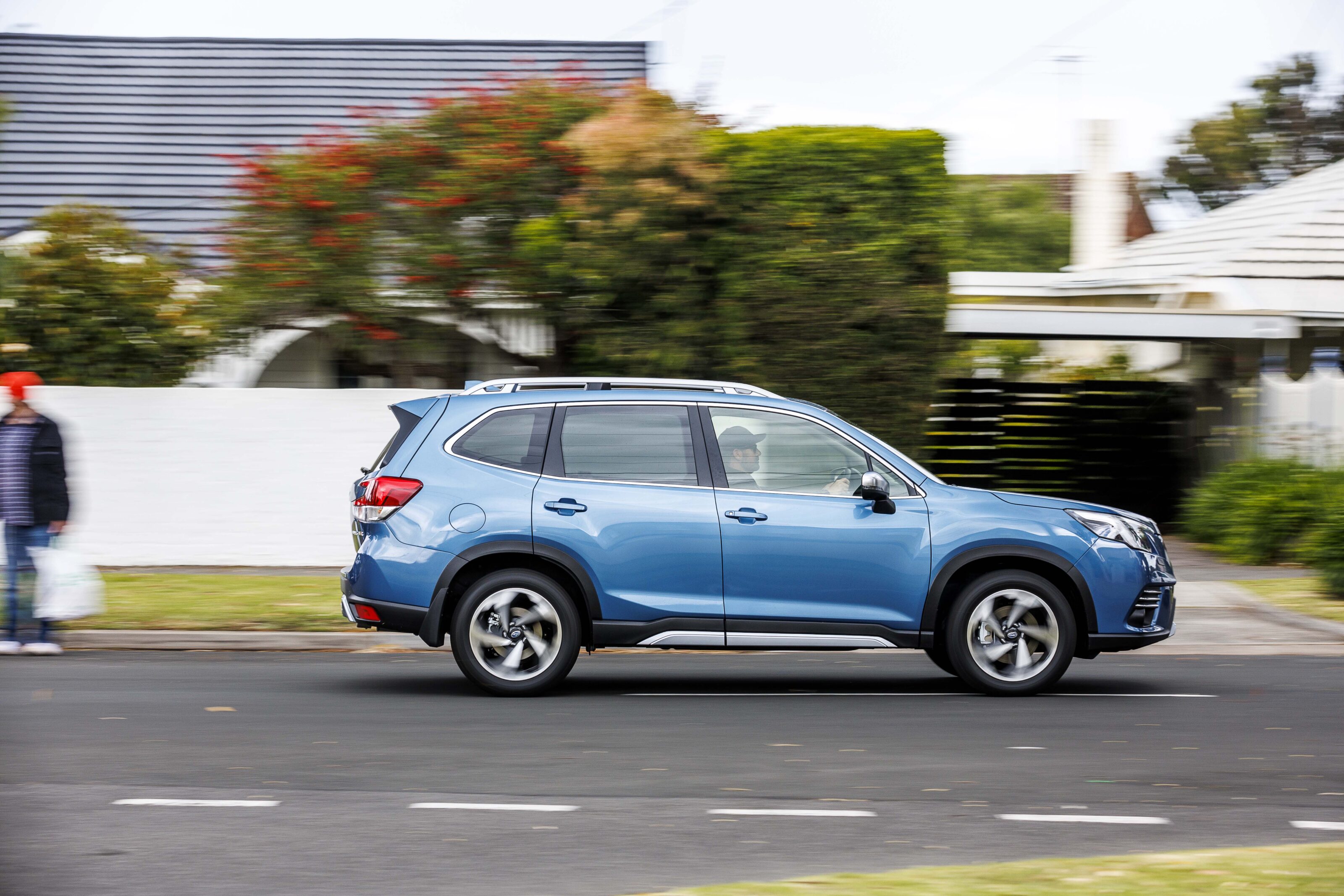
How is it on fuel?
Subaru claims an average fuel burn of 7.4L/100km on the combined cycle, while our road test returned a much higher figure of 10.0L/100km.
To be fair to the Forester, our route includes a fair portion of aggressive driving and very little highway cruising to offset it, so the higher-than-claimed result is no big surprise.
Auto engine start-stop is standard, with Subaru also helpfully displaying how many millilitres of petrol have been saved each time you come to a halt. Rated for 91 RON, you can also get away with putting the cheapest petrol in your Forester.

How safe is it?
Standard safety gear includes a full suite of airbags (front, side, curtain, driver’s knee), autonomous emergency braking at both low and high speeds as well as reverse, rear cross-traffic alert, stability control, traction control, adaptive cruise control, lane departure warning, lane-keep assist, blind-spot monitoring, 360-degree parking cameras and driver fatigue monitoring.
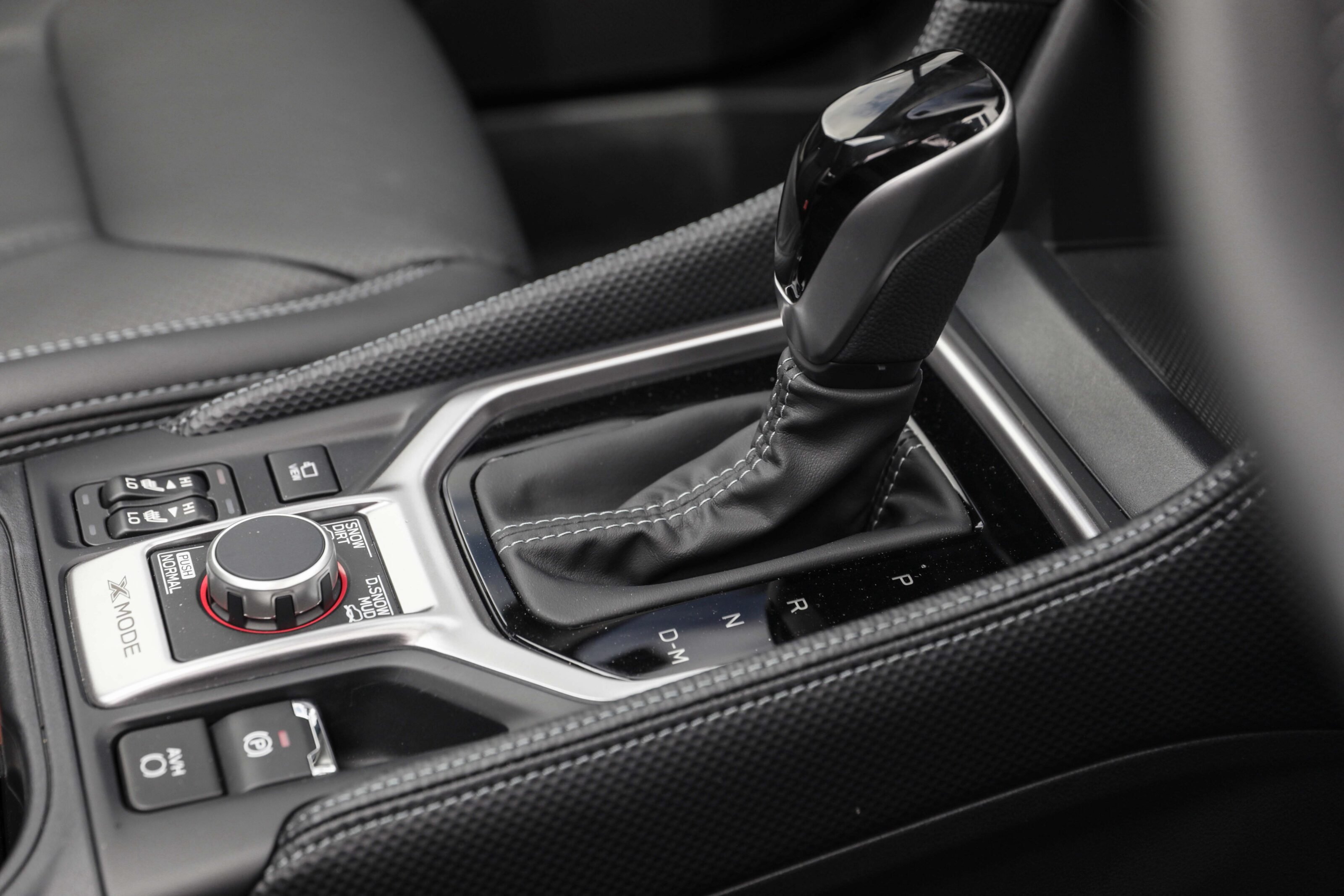
Warranty and running costs
The Subaru Forester is warranted for five years and unlimited kilometres. Service intervals are set for every 12 months or 12,500km with capped-price servicing costing a total of $2674.64 for the first five years or 62,500km of ownership, or $1387.25 for the first three years or 37,500km.
VERDICT
There’s not much gloss or glitter to the Forester, but as a car built for families or people who just like the idea of being able to escape the Big Smoke every once in a while, it’s easily one of the most rational choices in a very crowded segment.
Its packaging is as superb as its ride comfort and handling, and while the engine could do with some additional spice, that’s arguably not a great concern for the kind of driving most SUV pilots do.
It’s sized right, engineered right and, perhaps most critically, priced right.

| Model | Subaru Forester 2.5i-S |
|---|---|
| Engine | 2498cc 4cyl, dohc, 16v |
| Max power | 136kW @ 5800rpm |
| Max torque | 239Nm @ 4400rpm |
| Transmission | continuously variable automatic |
| Weight | 1576kg |
| 0-100km/h | not specified |
| Fuel consumption (ADR combined) | 7.4L/100km |
| Fuel consumption (tested) | 10.0L/100km |
| Price | $46,340 + on-road costs |
Things we like
- Spacious cabin
- Value for money
- Ride and handling
Not so much
- Lacklustre engine performance
- Fussy interior design
- Ceiling-mounted centre seatbelt
We recommend
-
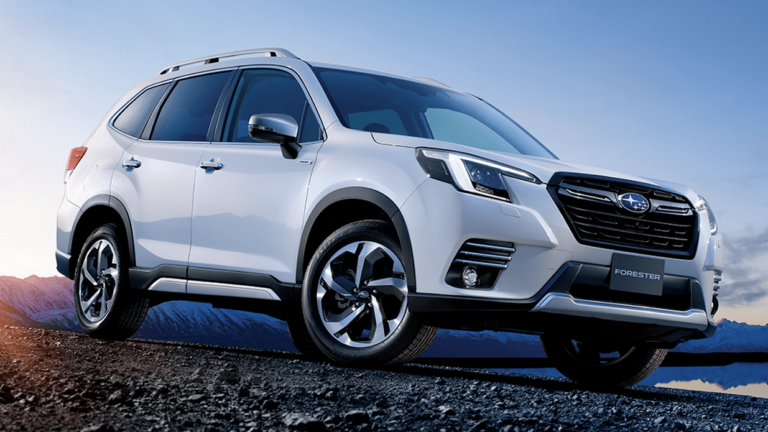 News
News2022 Subaru Forester pricing and features revealed
A mid-life update brings new driver assists and tweaked-off road functionality at a minor price rise
-
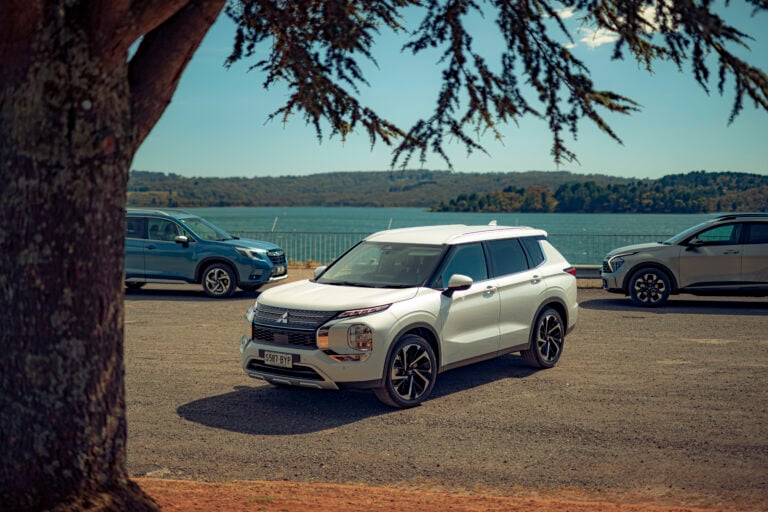 Comparisons
Comparisons2022 Mitsubishi Outlander v Kia Sportage v Subaru Forester comparison review
Mitsu is out to stake a claim with its all-new Outlander, but Kia’s fresh Sportage and the updated Subaru Forester are deeply ensconced on the mid-size SUV reservation
-
 News
NewsNew car calendar 2026: All the new cars coming to Australia next year
Here’s the WhichCar by Wheels guide to all the new cars that will launch in Australia in 2026. Check back in regularly for updates...





